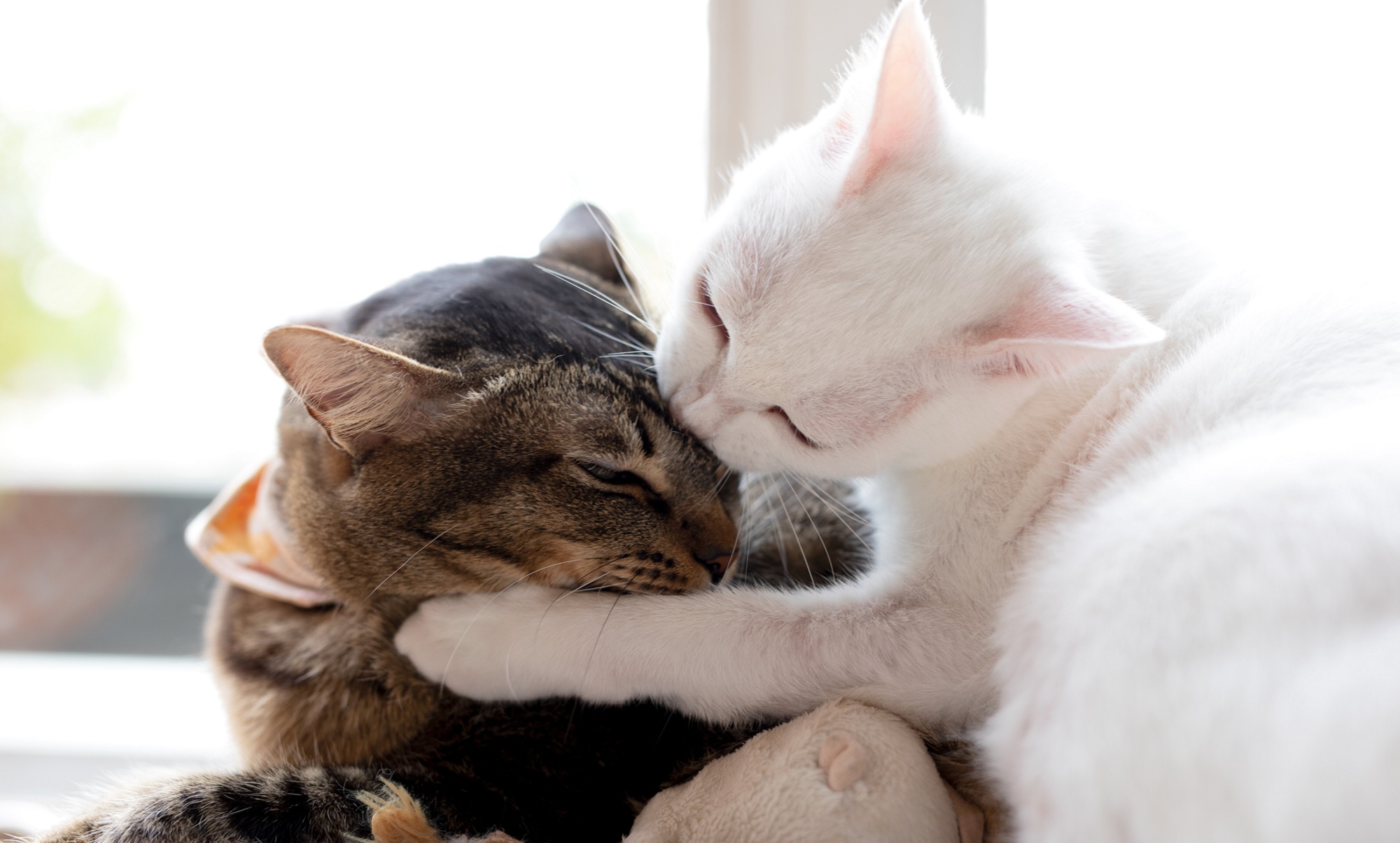

Cats are weird. You’ll buy the best toys on the market, and they’ll respond by spending all their time playing in the shipping box. They’ll also randomly get short bursts of energy that have them bouncing up and down the walls, and it always seems to happen at 3 a.m. And when playing with other cats from the same household, they’ll act like Jekyl and Hyde: They can be cuddled up one moment like the best of friends, and the next minute, they’re wrestling like UFC champions.
Playtime and socialization are important for feline health, but sometimes it’s hard to tell whether cats are tussling or actually fighting. In a new study published today in the journal Scientific Reports, cat behavioral researchers identified specific interactions that would show whether your pets were being playful, aggressive, or a mixture of both (with the potential to escalate into a full-out brawl). Understanding the behavioral differences can help cat owners manage any troubling relationships in the household and, hopefully, stop Fluffy from being a bully.
[Related: Despite appearances, your cat does love you]
The findings would not surprise professionals who work with kitties, says Mikel Delgado, an animal behaviorist and cat behavior consultant with the pet sitter company Rover, who was not involved in the study. But it confirms the current expert opinion on what’s considered playing versus fighting, and gives new insights to anyone who just loves cats.
Noema Gajdoš Kmecová, lead study author and a researcher at the University of Veterinary Medicine and Pharmacy in Slovakia, and her colleagues watched 105 videos posted on YouTube or directly submitted by people around the world to break down the antics of 210 cats. The videos included both indoor and outdoor felines, but all were considered domestic. “Within domestic cats, we have a spectrum of lifestyles living in different types of environments,” she explains. Pet owners or passersby captured videos of fights and play out on the streets in human-populated areas, as well as indoors.
The team looked for the following behaviors: wrestling, chasing, vocalization, inactive body posture (sitting, crouching, or lying down), other interactive activities (arched back, avoidance, belly-up, stalking, or something else), and non-interactive activities involving the little beasts or an inanimate object (self-licking, walking, or drinking). The researchers focused on overt behavioral changes rather than subtle body language, like prolonged staring or ear and tail movements associated with aggression, because they may be harder for the average cat owner to spot. They also excluded any cat videos whose behaviors (mounting or biting of the neck) might have been more sexual than playful or aggressive.

After the first run-through of footage, four of the authors rated the behavior as either playful, intermediate, or agnostic. Emma Grigg, an animal behaviorist and research associate at the University of California, Davis, who was not associated with the study, says she appreciates the inclusion of an intermediate category, as it can seem overly simplistic to treat social interactions between cats as strictly positive or negative. For example, she notes that one important gray area is when an interaction starts as a mutual play, but shifts when one cat from the pair wishes to stop playing and the other doesn’t.
More than half of the cats in the candid clips showed playful behavior. Nearly 29 percent displayed aggressive tendencies toward other felines. Finally, about 15 percent showed behaviors falling in between play and fighting.

Wrestling was commonly associated with being playful, though it has the potential to turn aggressive. But cats that use only their paws, have no pain-related sounds, and alternate positions are signs that they are fooling around. “These cats are very familiar with each other and can afford this type of close contact,” Gajdoš Kmecová explains.
Meanwhile, vocalizing (growls, hisses, snarls, gurgles, or yowls) and chasing were strongly tied to aggression. Chasing, however, can also be considered play if both animals take turns being the pursuer. “Their discussion of the importance of looking for signs of reciprocal play was great,” Grigg says. “This is something I often hear recommended for dogs but is less commonly emphasized for cats in my experience.” Gajdoš Kmecová says that her team is working towards studying subtypes of behavior to better understand interactive behaviors beyond labeling them as wrestling and chasing. Different types of wrestling positions, for example, involve a variety of interactive behaviors and ear and tail positions.
Several other behaviors could be considered a mix of play and fighting. Cats in the intermediate group often spent a good chunk of time laying on their back with their belly up, pouncing, stalking, and grooming the other cat. According to the authors, feline interactions vary day by day, which is why they show such range in play-fighting. Like with any family member, you’re bound to have some petty squabbles, then make up by hugging or goofing off a little. A kitty showing slightly more aggressive behavior toward their housemate could just be a brief argument, and not the two drifting apart.
[Related on PopSci+: Do cats bond with humans like dogs?]
Grigg says that any single event can not predict a relationship between felines. Rather, “patterns of behavior over longer periods of time likely reflect whether the cats are true friends or incompatible roommates,” she explains. Delgado, for her part, thinks the creatures either have conflicted relationships or that there’s still much we don’t know about these clawed assassins.
Gajdoš Kmecová recommends taking a few minutes each day to observe your cat’s interactions. Once you get a sense of their behaviors, you can evaluate and put into context how these actions shape their relationships with others of their kind—and even yourself. This gives curious cat lovers more reason to watch, film, and obsess over their pets … for science.
